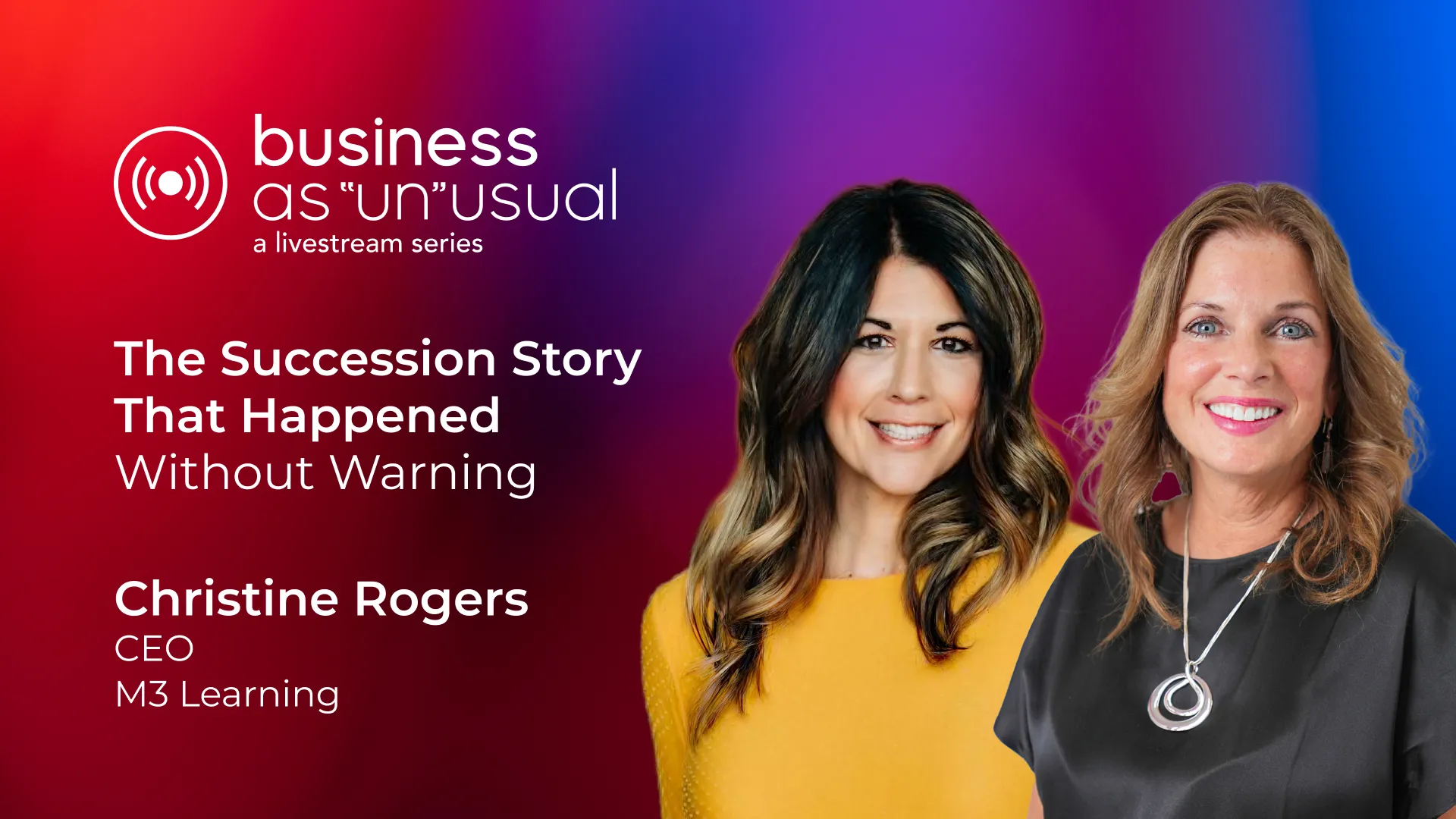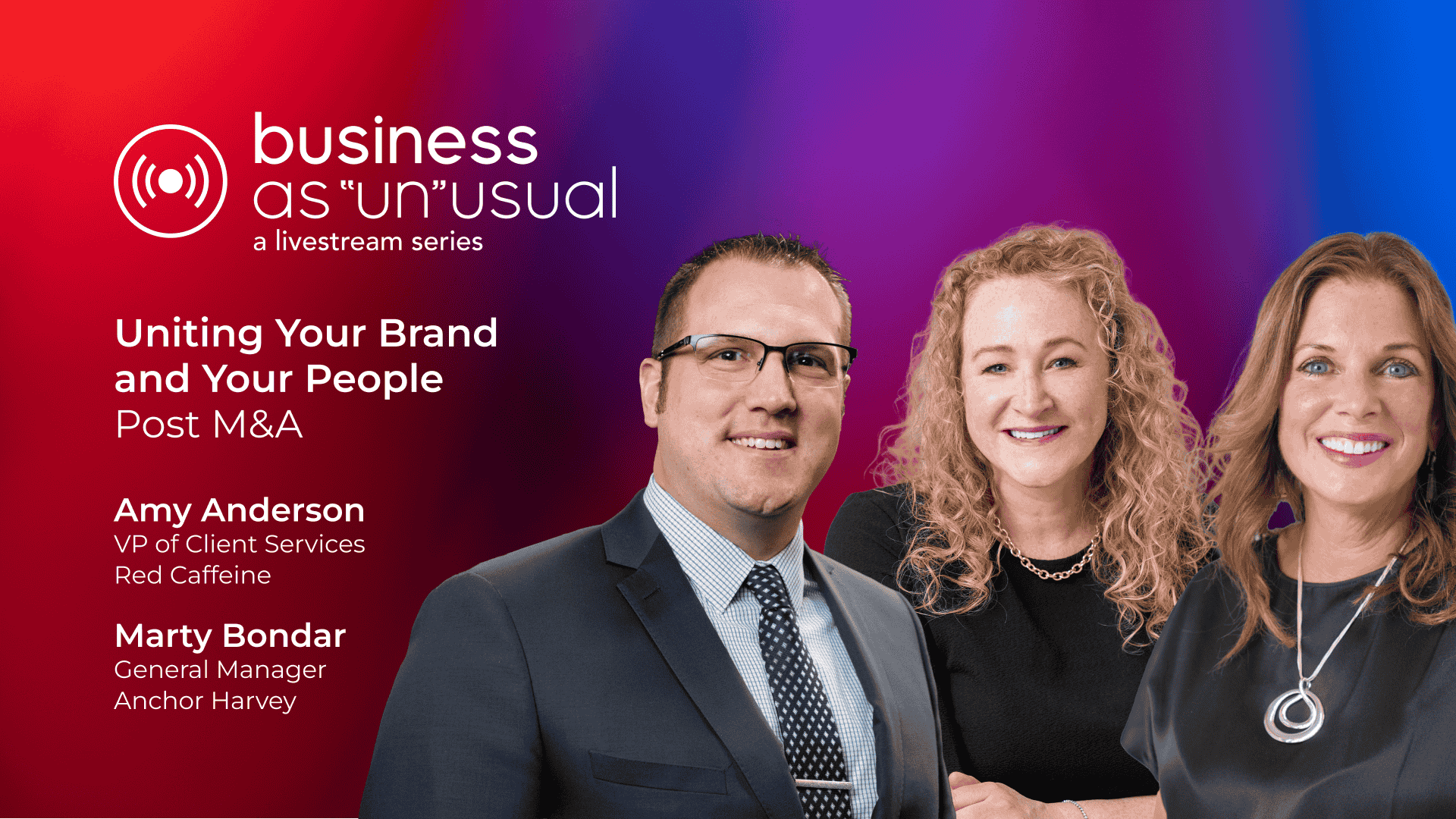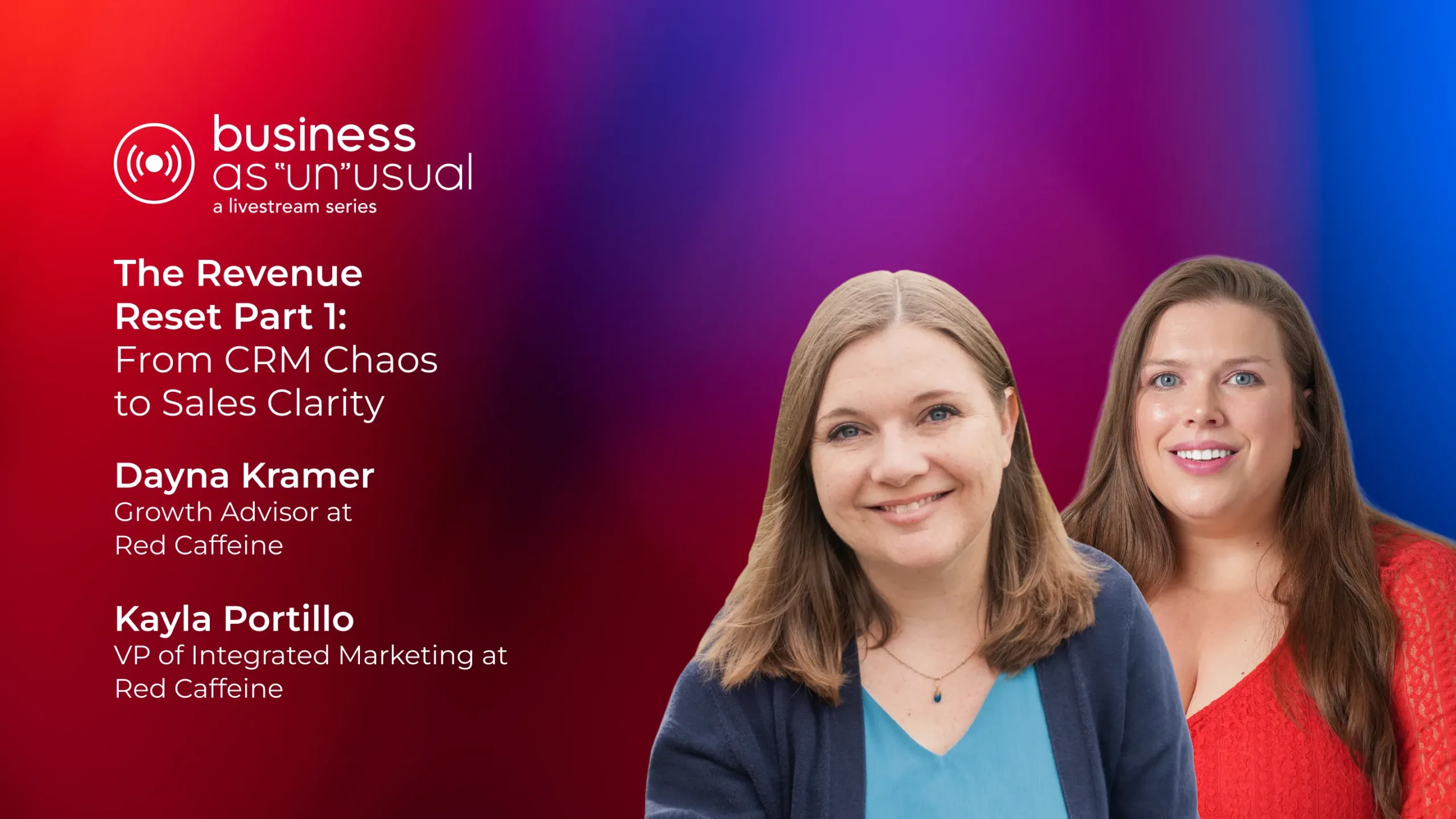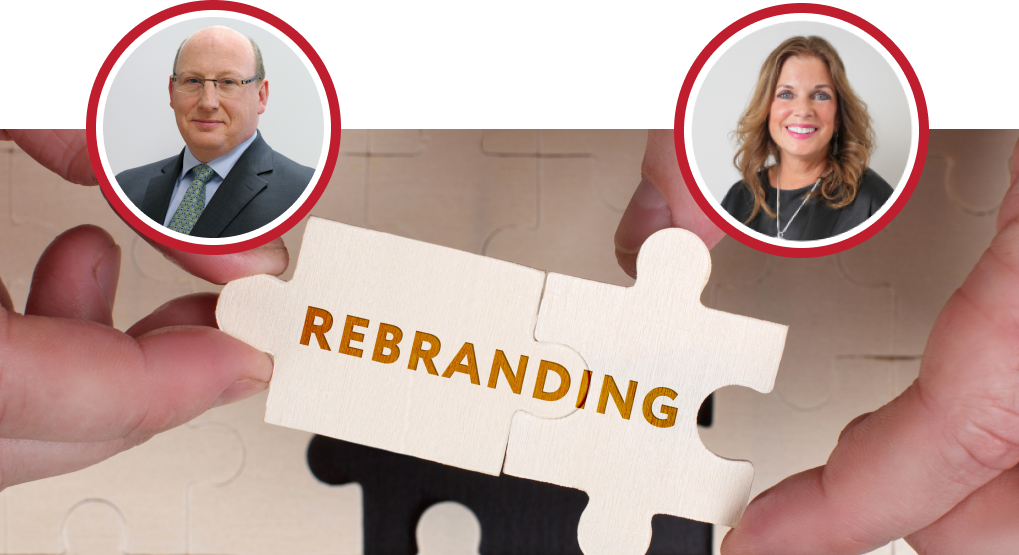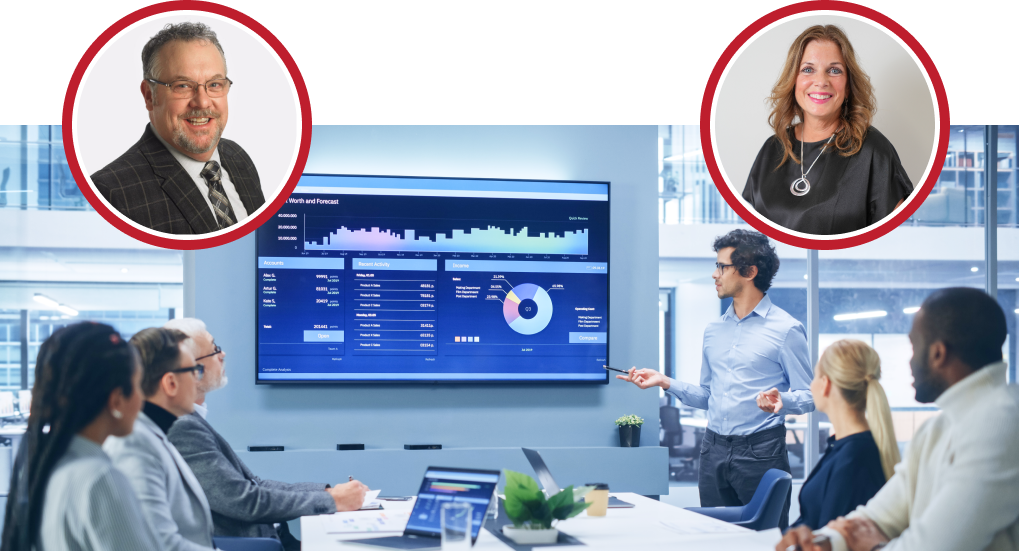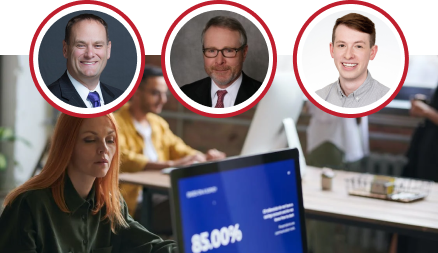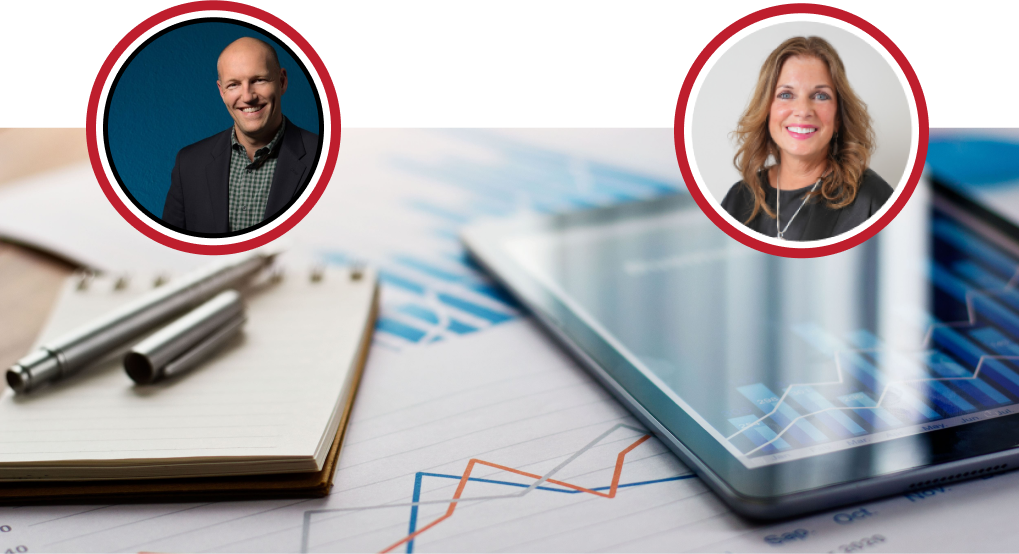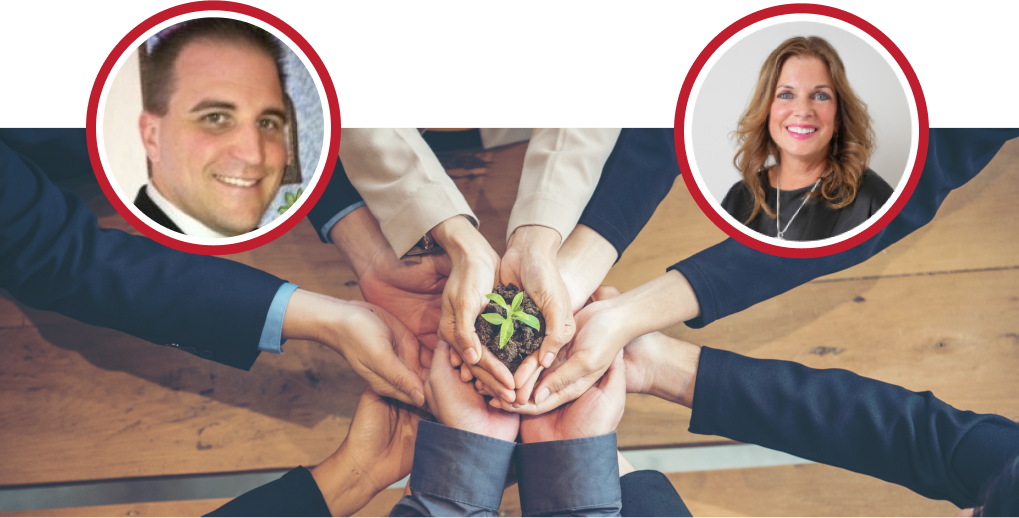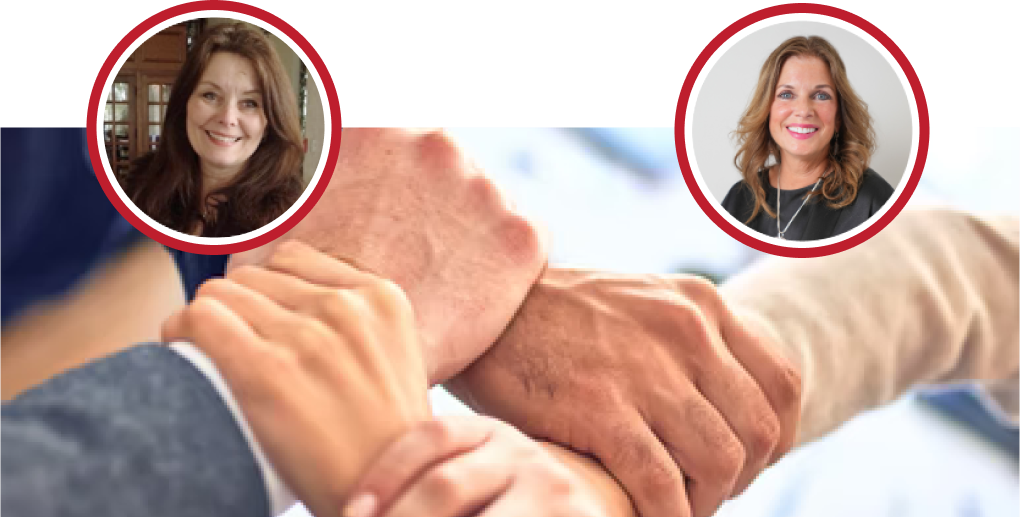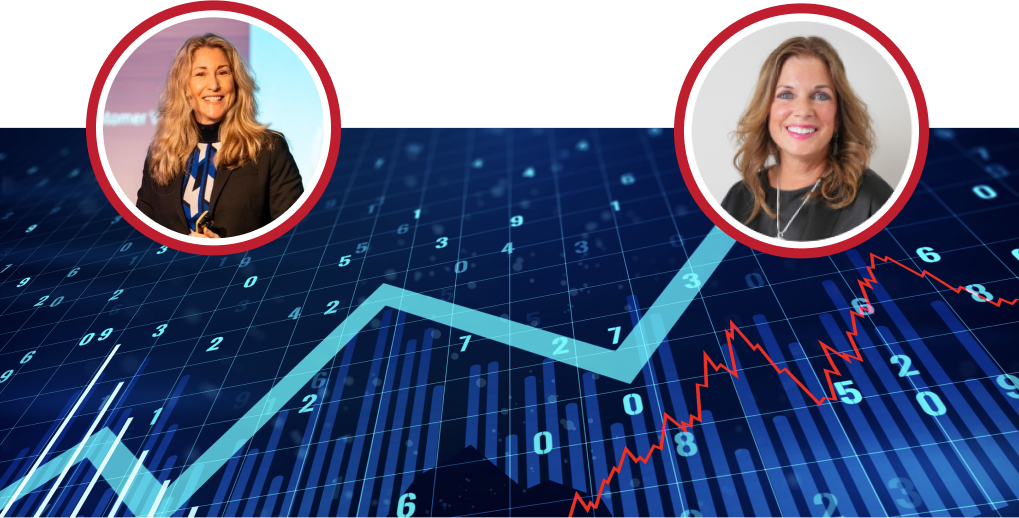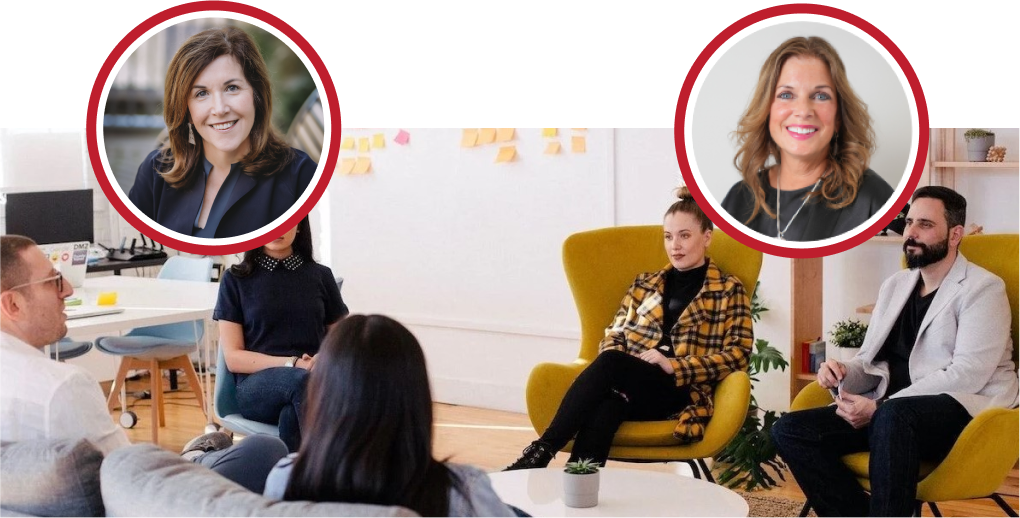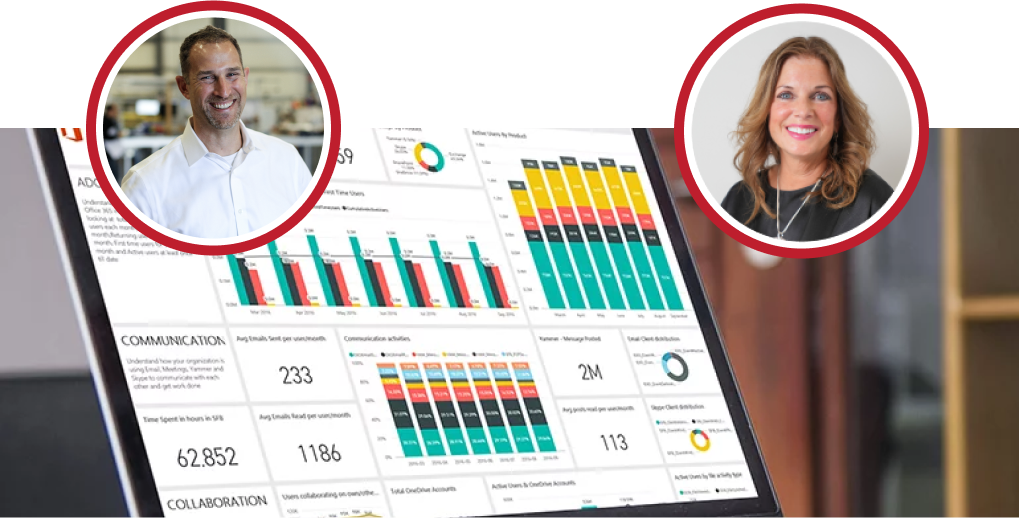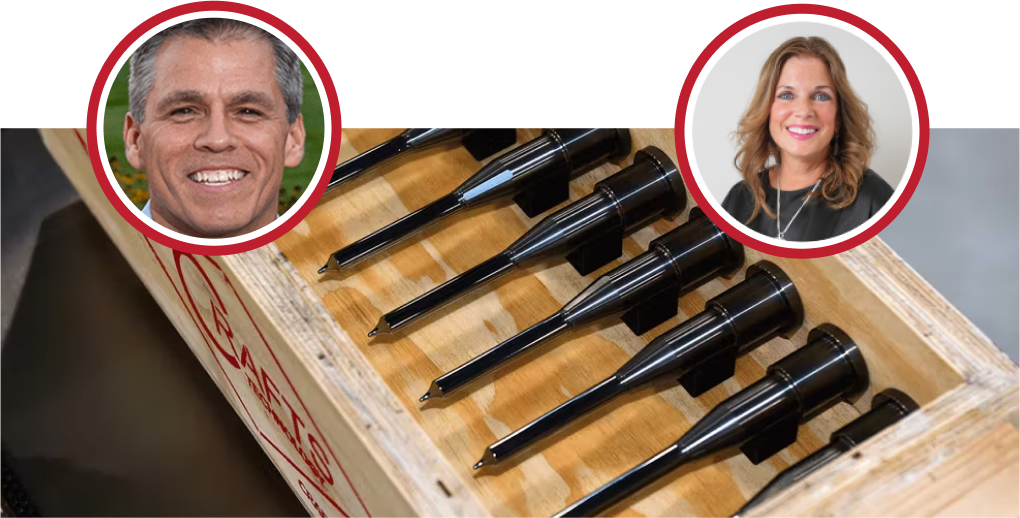Lisa: Welcome everyone to today’s “Business as Unusual” webinar series. We are so excited to have you join us on this beautiful September afternoon here in Chicago. We’ll be getting started here in just one moment, and we’ll be welcoming in our live stream guests here in just a moment from Facebook and LinkedIn, so while we do that, make sure you’ve got a pen and paper a remarkable two or whatever you’d like to take notes on we’ll be getting so much great content as we walk through Chitra’s deck today and all the information she’s going to be sharing with us we should get here we should have our live stream guest joining us here in just a moment. So, very excited about that, and we’ll get our presentation pulled up here. Hopefully, everyone is having a wonderful day so far. As I said, it’s a beautiful day here in the Chicagoland area. For those that are here, it’s I know, Kathy; what would you say 59 degrees? And definitely fall frigid. Yes, compared to Florida, we’ll get our presentation pulled up here one moment. Thank you, everyone; as we said, we’ll be getting started here in just a moment, and actually, since it is 1202 Central Time, let’s go ahead and get things started. So again, welcome everyone to today’s “Business as Unusual” webinar, where we’re talking with badass industry leaders who are helping us survive and thrive in today’s economic climate. My name is Lisa Behning, I’m an Account Director at Red Caffeine, and I’ll be your moderator for today’s session. I’m also joined by Kathy Steele, CEO of Red Caffeine. We are so excited today to have Chitra Iyer, who is the Principal Consultant and Co-founder of Kairos Partners, with us today and teacher is going to be walking us through how to make your data work for you, so we are going to dive into the digital transformation aspect, and how it can impact your business, we’re going to talk about how data can be built and how you can work with it in different channels and lastly how you can help test and optimize that data and the information from it in a learning environment. So, those are just three key takeaways you can expect from today’s session. Chitra is coming into today with over 15 years of experience in digital transformation and data. She’s worked with everyone from startups to Fortune 500 companies to help them with their digital transformation. So, I will say she is quite the expert in the field to be sharing her knowledge with us today as we get into our session now, you’ll note everyone is on mute today. So, if you’d like to ask a question for those on zoom, please use the QA option, or you can also use the chat function. We’ll be moderating both of those channels, and for those who are watching live on LinkedIn or Facebook, please drop your comments into the comments section. We’ll be watching there as well. Throughout the session, we’ll be taking questions, and the teacher will be answering those as well as an open QA section at the end. Lastly, I’d like to congratulate the winners of our free 20 lunch voucher as a reminder for the first five people who register for any of Red Caffeine’s webinars; we do a lunch giveaway for the first five registrants, so 20 is in your Grubhub account so you can order lunch from a local business and help support your local restaurant industry. So, today’s winners are Mark’s Chris, Column A, Gabrielle S, and Tom N you should have received an email from me yesterday if not, please reach out to us over caffeine, and we’ll make sure that you get your voucher in your account. So, with that, I’d like to go ahead and welcome teacher ire officially to our webinar today, and ladies, take things away.
Kathy: Thank you, Chitra; it was so much fun prepping for this conversation with you. I thought we probably could have done a whole day on this topic. There was just so much information. I always find it interesting that I’m such a data nerd when I’m a creative person, so, but I do feel like there are a lot of tie-ins to creativity and what data can do to help impact it but let’s start talking a little bit more about your career journey. Kind of, tell us a little bit about your past experiences and how you came about finding Cairo’s partners?
Chitra: Yes Kathy, it must be a pleasure to be here as part of the “Businesses as Unusual” webinar glad to be part of this community and my love for data started way back when I thought it would be an accountant but then it transformed over time and I ended up in the marketing and analytics space and I’ve always been fascinated with numbers with data and the fact that you have the power to take data transform it to information and drive decision making and when it gets to digital you can actually connect the dots much closer to where the action happens and be able to see what difference you’re making just totally blows me away and keeps me fascinated and with every day the changes that we hear with the addition of social media chat and whatever predictive analytics and whatever we talk about next we keep getting closer and closer to being able to harness the true power of data and that’s what basically drove me through all of my career whether when I was working at the larger corporations and companies too when I became a consultant and I really wanted to help my clients harness the power of data and that’s what made me create Cairo’s partners.
Kathy: Well, thanks for that. That’s really great, and I think that we always talk about opportunities for growth. Digital technology has been impacting businesses and accelerating things that we do both in our day job and then as a true opportunity to drive differentiation too when you use technology but let’s start with unpacking digital transformation. It’s kind of a big topic; it’s that term probably used a lot, especially today, and tell us a little bit more about what you see as digital transformation? How is it impacting a business’s opportunity for growth?
Chitra: I think it impacts the growth opportunities in many ways, but the key thing to take away is it’s really changed management right our environment keeps evolving. It’s not that businesses change just because we now sell online or there are a lot more technologies for us to interact with our target audience online. It’s not that the fundamental business has changed. It’s just opened up avenues more avenues for us to be able to reach out, connect and transact business on different platforms, and that’s what we are seeing. So many of these areas that you have identified here are probably impacted by digital transformation. In words that people might see online, they will say digital transformation involves the use of technology to radically improve performance or reach a business; that’s boiling down to saying you have another channel, another avenue. How do you embrace it? And how do you build it into your business processes? That’s what makes the difference, and that’s what is the true success measure. So, to say of transformation digital transformation.
Kathy: Yeah, I mean, I think it sounds so big and lofty in some cases, and it’s really just about how we’re using digital tools in our everyday work workload as well as really the larger data and analytics that we can do to improve performance both internally and externally. So, let’s jump into you to your some of your slides and have us step us through. I don’t know if you wanted to dig in a little bit more into the overall setup of digital transformation. We’ll kind of start there.
Chitra: Yeah, certainly, as I said, digital transformation, I look at it in simple terms as a change manager. For example, if you have customers who are ordering your products and services, you open up online your website as another avenue to place those orders and services, it comes with the overload of having to collect the data of having to transfer the information through your channels to the right places so that you can execute those orders you can capture all the information but the fundamental process of placing orders getting customers talking to them all of that is the same it’s just how you do it? How do you execute it? It’s different, and you have to take up the learnings or the intricacies that come into play with digital and kind of bake it into the rest of your organization, and if you move to the next slide, that’s what I primarily focus on. When I say digital transformation, it is about incorporating the digital elements into the three key pillars people process platforms right those are the three things that really drive everything that happen in our organization people refers to your organization and the culture how do you evolve and involve everything that happens on the digital side into every part of your organization I have lived through organizations where they start out by saying everything that happens online is separate it’s a world of its own through the transformation where it’s happened to say that it’s all omnichannel so it doesn’t matter to your customer how you touch them and so you have to operate in that way that it doesn’t matter where I’m interacting with my customer and make it seamless for the customer all through the different platforms the different channels the way you touch them and you talk and so it is important for your organization to be built that way so that they can leverage they can support all the digital activities along with whatever you do outside of the digital platforms in a seamless way so that you can bring it all together because at the end of the day the customers expect to set the same experience they expect you to know them they expect you to talk to them the same way regardless of where you’re touching them it also enables the faster flow of information and decision making which leads to processes right you have to have your operational processes operational parts of your business incorporate the digital elements in an order processing environment as an example you can have orders coming from your Salesforceand you can have orders coming from your digital channels how do you make sure that you put it all together to know it’s the same customer? Who’s placing orders? Whether it’s calling into your phone lines and placing orders or it is through your website right, you should know that it’s the same customer so you can connect all the dots and be able to say this is the total transactions or these are all the activities that this customer has engaged in and that’s where come the platforms all the tools and the technologies that you would need that you should have in place in order to have a strong digital presence to be able to collect all the information that you need to help you with this transformation.
Kathy: So, can we dig into platforms just for a second? I was, are what do you view or what are you seeing as the key platforms that most businesses should be having in their technology stack? And I know we will talk a little bit about that later, but just could you give us some things that are in a typical technology stack or business stack.
Chitra: Sure. Now it’s going to vary by which element of the business are you looking at which part of the business so when it comes to your ordering systems, there is a whole host of tools that you would look at when you look at content; there are a lot of tools my focus is specifically analytics right, so I deal with data lakes, marketing hubs, analytics, marketing databases tools, reporting dashboard tools like Tableau. You have many tools there I’m just picking one or two that come to my mind hen come tools that help you track what people are doing online you have hot jar flip there are many different tools that you can find that help you track different elements there is Adobe Analytics there is Google Analytics right so there isn’t really one standard I would say it depends completely on the business need and the environment and more importantly the budget right so what’s your time horizon that you want this tool to scale to what kind of business growth are you looking at and what kind of budgets and realities are we dealing with all those need to be taken into account to say what kind of tool stack you can you should go with there are lots of options these days that makes it very difficult to kind of just name a few and prioritize and say it is justice but I think it’s a sum total of what’s your business plan what are your goals that need to be the first thing that we should look at before we get into tools and technology.
Kathy: Right, yeah no, I mean, I think naming something like marketing automation gave that, that sort of thinking that these things would automatically automate marketing and it’s so the contrary there’s just so much need to Yeah? Just stand on the different platforms and have experts helping manage some of these platforms or integrate some of these platforms so you can really truly get that analytic and business intelligence out. Well, let’s start talking about some of the things that should be considered in a marketing miss when you’re starting to think about your channel of distribution. Let’s talk about that a little bit.
Chitra: Yes, certainly, when you get into a digital transformation or want to expand into digital, you’re looking at lowering costs and increasing accuracy. You’re looking at improving speed improving business efficiency; you’re also looking at keeping your business relevant and competitive, and your customers are expecting it right. So, this is no longer an option. It’s more of what it’s the norm; right, everybody has a digital presence today; if you see every company has a website, they probably are doing some email marketing they probably have some social media presence. They may have other tools on their site like chat and other things; it’s more of a requirement these days, so I don’t know if the audience pool that we have, how many of them are already their businesses, or the places they work have already got a lot of these elements but it’s more about making sure evaluating your current environment elements are the right ones to support your business as it either gets started into the digital area or its expanding its presence into the digital areas and some of the things to consider are channels. What channels are you live on today? I’m speaking specifically from a marketing and sales perspective just to clarify for everybody and keep us all grounded; this is all about data and analytics and the related environment to that. So, when I say channels, I’m talking about are you how do you have emails? Do you have online advertising? Are you on social media? Do you have paid search? Do you have a chat? Do you have print or traditional marketing? Do you print direct mail? Do you have a relationship marketing component with your sales force? There are many different ways that you can touch and reach your customers; where are you active today? Gives firstly, the lay of the land what kind of content do you use? Do you know what messages you serve? Why do you use videos? Do you use downloadable documents? Do you have blogs? How do you disseminate your content to your target audience? Do you, and what’s your refresher reuse cycle? What kind of cadence do you touch them? How often do you touch them? What about the data that you collect? Do you follow all the breadcrumb trails that your customers leave? Especially when you talk digital there are a lot of things that that you can collect and know about them there is data you can buy about them right online advertising if you think about it buy it there’s a lot of data that companies buy to track your online activity to serve you the most relevant advertising based on who the target audience is so there’s a lot of data out there do you collect that how much should you collect right those are all the questions that come into play that help you understand the contribution of all of this activity and here I mean what is success how do you define success how do you track and measure that identifying and saying how what is what is my success for each channel overall how do I measure that and it is important for us to track those key actions and conversions right from the top of the funnel to the bottom because changes you make to the top of the funnel impact what happens at the bottom your ultimate outcome in terms of revenue or customer growth so it is important to understand each of these areas in order to know how to select the channel mix.
Kathy: So, are you using it when you’re thinking about selecting the channel mix? Are you using interview data or survey data, or are you using competitive data? What things are you looking at to sort of set the start of a channel strategy?
Chitra: Yeah, that’s a great question. On the next slide, I kind of lay out some of the things considerations for that; it starts with the larger picture, right? What’s your business goal? What’s your marketing strategy? When are you looking through that? When are you assessing that? That will involve interviews that will involve a collection of information to know what is it that you are thinking from a business standpoint you want to do and specifically from a marketing standpoint that you want to accomplish budget how much are you looking to spend right that becomes very important you can nobody has an unlimited budget and based on the budget and the strategy you have to come up with what might be the optimal most efficient way for you to accomplish what you have because that will also determine the goals that you set that you will be tracking your performance against assessing competition right. What’s the lay of the land? What do your competitors do? It doesn’t necessarily have to drive what you do, but it certainly influences what you do because if your competition is involved in certain activities that you are not, it may be perceived as a gap, or they might give you the opportunities for where you could play and own and be the leader where your competition doesn’t exist so assessing the current landscape is important then comes relevance which channel is most relevant for your product and service or service right if you are a B2B company Facebook might not be the best place for you to be on the right. So, for you to know where your target audience is depending on your products and services is critical and then of course your target audience who is your target audience where do they play what do where do they like to go to consume content where do they like to go to find information about products and services how do they like to interact you can you can find a lot of information from research you can find a lot of information from third-party data aggregators that can help you understand those content preferences or area preferences for your target audience coverage now what I mean by coverage is your business a 24×7 right do you have to be on all the time or is there time when you are off and same way for seasonality right those define what might be what might be areas or the channels that you might use to cover at the time when you are not on or your business is not at a super high kind of volume to say that you might be managing the activities how you do from a marketing standpoint these are all some of the things to consider when you look at a channel mix but the biggest is knowing your goals knowing your strategy because all of that is what feeds into the rest of the elements right your budget may be fixed you might have a good idea of your competition but it’s very key to define what you’re looking to accomplish because that is what will define the channel mix as an example if you’re a business that’s looking to strengthen your relationship marketing through not just your Salesforce but trying to expand it beyond your Salesforce you might be looking at growing more in the areas of email marketing, social media marketing, paid search those might be some places that you might want to expand into but if you are looking to strengthen your relationship marketing with your Salesforce and looking to just be provide more sales aids or tools to your Salesforce and not reach out directly then you might look at doing more in terms of email and social media like YouTube where you can serve content not necessarily interact directly with your customers or you might be looking at online events like this where webinars or discussion panels where you have an opportunity the Salesforce might have an opportunity to discuss in depth on the topics of interest so the mix of channels that you might select will vary drastically based on the kind of goals and strategies that you have.
Kathy: It makes so much sense, and I definitely think about budget too. I think there have been times where we’ve done competitive reviews and just said we are absolutely not going to be able to go after this competitor because they really own a specific niche in the marketing space, so even using some of the analytics and some of this insight to drive kind of creating your budget I’ve seen data impact that as well. So, what other ways do analytics play a role in selecting your channel mix?
Chitra: It plays the biggest role basically in helping you understand performance right. So, you have to create your measurement plans in order to know how you’re going to track performance and what you’re going to do but underlying all that is the cycle of kind of analytics or analytic cycle or what however you want to describe it starts off with a collection of data right that’s the basic thing you have to collect data you have to know what’s going on and you’re talking relevant data there’s a lot of data that you can collect online, especially in the digital space. Once you get into saying what is important? What should I focus on? And it depends on the role that you might be playing, so if you’re in an operational role, what might be important to you maybe things like email delivery website hits viewability of online ads right, but if you are more managing the performance, the outcome then you might be more interested in how many dollars did my campaign deliver or how many new customers did, I acquire? Did I reduce customer churn? What was my cost of acquisition? So depending on the kind of question you’re looking to answer and what your focus is, the kind of data that you collect would change, but the teams that are sitting in data management data governance would be the ones to make sure that they have a holistic view of all the data that they should be collecting and how they should be managing it so now that you have all the data then what do you do with it right you got to transform that to information because data are getting the bits and bytes ones and zeros don’t really help you’ve got to transform it to a more readable in a more digestible fashion in order for it to start making sense to your end target audience right. So, you as marketers, you as analytics managers, you’ve got to take the data, clean it up, transform it into reports dashboards trackers to know what is going on, but we are still not there at the decision-making phase once we have all these reports because we still need to add the intelligence for the context around the right data context around all of these reports. So, interpretation and context to say what were the business conditions what were my campaign objectives what was I trying to accomplish what were my goals what were my baselines if the report is showing revenue is trending up that’s good right in general but is that what I was expecting am I hitting the goals or the benchmarks that I was expecting to hit or am I below that no in order to know all that you have to add that intelligence component to your reports and that also involves data analysis right getting into understanding trends patterns opportunities can I do more cross-sell upsell kind of campaigns predictive opportunities what’s the future channel investment guideline I can give today I have this channel portfolio but based on performance I think we should shift in order to be able to give those kinds of guidelines you have to be able to analyze the data which then leads us into decision making you take all the learnings that you have gotten and you make your decisions to say should I start stop continue the activities that I have right now and that’s what leads to optimization which is basically the continuous cycle of what can Improve identify opportunities to improve so that I can go back to the start and keep going continuing this this loop one example I like to share here is a client of mine is in the process actually right now of implementing trigger-based marketing learning more from experimentation. So, these are like small experiments based on business rules where they identify small populations of their customers whom they think, based on business needs, would be the best candidates for certain kinds of communications. So, they go through this entire process even in this small scenario of identifying what data would be needed, how would we transform it, how would we get all reports that we need how would we get the intelligence and the context analysis of all of the information that we’ve gathered so that we can make the decision of how are we doing with this specific trigger is it delivering what it was supposed to deliver. Do we need to go back to the drawing board? Do we don’t have enough target audience, or is the audience not responding as we expected? Should we go, what can we optimize, and what can be changed? Should we stop, is this just not working, and should we just stop it, or is it a great success that we should take this now and roll it out to the whole customer base so that sort of this framework works even from an experimentation standpoint, any standpoint you can take it and drop it in order to enable analytics.
Kathy: It makes so much sense. I do want to ask a quick couple of questions around what, when you don’t have a lot of sort of benchmarking data, internal benchmarking data, are you helping people look more at the macro analytics and sort of setting that initial benchmarking, to help you sort of start to create your own analytic story I think there are people at all ends of the spectrum when it comes to tracking and having access to data. So, what do you recommend?
Chitra: There are a lot of industry benchmarks for many of the big or more common things, right. If you talk about open email rates and click-through rates, you have a lot of benchmarks available by industry by different groups that you can dig into you have for online advertising for paid search. So, general benchmarks of that sort are good to start with when you don’t have a lot of jungle benchmarks. I advocate usually using two tiers, so one is the industry benchmark, but two is internal as well. Over time, as you collect the information, you want to know if you are performing better than what you did in history. Are you improving upon your performance or not? That is something that you should track as well while knowing where you stack up against the competition right the competition element of it comes from the industry benchmark.
Kathy: Yeah, perfect, and then what about things like vanity metrics? I mean, are those I think sometimes we feel like, oh that who cares if somebody like this post or what have you like, but there is some sentiment to see over time that everybody likes our posts around our people. So, I do always wonder about the validity of tracking some of these vanity metrics that we see; what are your thoughts on that?
Chitra: Excellent question. Vanity metrics are great when you’re talking about looking at that specific channel because you want to know if people are engaging in that channel, and social is one where I hear that a lot of people view the post they like the post they share the post that’s the great form in a B2C environment you might see some connection between that and customer sentiment online search trending which can be somewhat correlated with sales revenue. There are opportunities there when you get into the B2B it’s a little more difficult because the steps that you have to jump through there are a few more than being able to connect directly with that but if you are just evaluating social you want to see how people are interacting and engaging in social media then those vanity metrics are important but once you start looking at it holistically to say social is one piece of what I do across all of my channels you have to identify what are the key apes metrics from each of these channels that makes sense for me to track there is at the awareness phase where some of these are important right if more people are getting exposed to my messages the views and likes are great because I want to know that they are getting exposed to my messages but once I get to the engagement phase a like is not the same as an email click so where does it which is more important for me to track at this point in time can I translate it in a different way if you see my social post and you click and come to my website maybe that is more important for me than for you to say you like my post right. So, they could be you have to pick and choose depending on what you’re trying to accomplish and what is more meaningful in each of those stages of your funnel and then finally getting down to the conversions. Are you looking for conversion from actions on your website? Are you looking for conversions from actions to actual revenue translating actions? Or are hand-raising actions those defined? So, that’s where the measurement plan identifying the KPIs, the key measures that you want to track at each phase right the changes at each phase and the contribution of each channel changes that’s what becomes important, yeah and that’s, and that’s an in a whole topic of its own which is why I didn’t bring it in here talk about today.
Kathy: I appreciate you just at least touching on it at that high level, and so I think we’re going to step into the next thing that is a challenging topic. When you’re talking about a client’s budget, hey, let’s experiment with your budget like I don’t know that, that always gives people the most, the confidence that that but this does require a lot of experiments so tell us a little bit about how you set up a learning environment from a process standpoint and then what are some of the things that you talk about with clients that give them comfort in testing some of these, these digital strategies?
Chitra: Sure, testing can be as expensive as you want to make it because I believe that you can build and test into every campaign or every touch point that you have there are simple ways to do it but it’s more about being consistent and being strategic and thinking about it at the onset right the first most important thing is actually senior leadership buy-in if your senior leaders believe that there is value in learning and having a learning environment where failure is accepted right some experiments will fail some will succeed you learn from your failures to figure out what to optimize and build on it and senior leaders play a huge role in that in promoting that kind of an environment and that’s key to having a success for a learning environment rest of it in terms of the technical aspects of it to say how do you plan an experiment and you started a hypothesis you have test and control those are all things that people who know how to set up experiments can take care of you get into the part of do I have large enough target audience you can get creative about how you can create test and control groups even with small audience groups but those are all the manageable part the biggest part challenge that I have typically seen is about the organization buy-in and people promoting that and sharing of the information right the democratization of data you share your successes or your failures that people learn that it is okay to talk about it is good to talk about it because then we don’t repeat the same experiment and expect a different outcome right document it share so if group a is doing it group b is aware of it and they go hey this didn’t really work for them would it work for us and they evaluated with that lens and it is not just reinventing the wheel every time that you get into.
Kathy: Yeah, and I think that we find that valuable even across client sets, so we love to try and internally share things that have gone really well or things that haven’t gone really well. So, we can sort of learn from other experiences across our client base. We’re kind of fortunate we work with a lot of lots of different industries and lots of different clients. So, I think that overarching learning is a huge opportunity from an agency or consultancy standpoint. So, let’s talk about like a real-world story I think that would help bring this sort of home to our attendees today. Can you step us through a case study?
Chitra: Yeah, certainly, one of my clients was in the legal industry used the traditional marketing channels and traditional here I mean print referral marketing email marketing. So, it wasn’t that they weren’t in digital, so to say, but they truly weren’t into the digital space because email’s been around for a long time, and you can have that but still not really have a digital presence and as they were transforming their business expanding they wanted to reach to a broader audience with the product that they have, and so they felt that they needed a larger presence in the digital marketing space. So, they basically put together their digital marketing strategy to identify the channel mix the goals that they had for each channel develop the measurement plan to see what exactly each channel would deliver identify the kips what measures they would have and what they landed on was to say that they would expand or strengthen their presence in organic search because they wanted to drive more people to the site which meant a lot of investment in content on their website content that they served on other platforms that they could leverage and this is where testing comes into play as an example the same content that you develop you can have on your website you can post on social media like YouTube or other places you can email it and there’s your built-in test to see which channel resonates if I send a link to a video right where do people tend to see more video if I send them via email or post it on social media or if I have it on my website and if I drive them to it right if they’re searching, if I get them to search for it that’s like a test so when I say test I don’t mean like a ginormous document that you’re building out or so but this is kind of built into your processes so you learn which levers to pull at what time so that you can get more out of the content or out of part of the activities that you’re already investing in so they decided to expand their organic search footprint they decided to expand the content but combined with what they needed to do with organic search they decided to go social media to leverage the content that they were creating and with paid search because they felt that that that complemented what they did with the organic search side of it and with this expansion and all of the platform pieces in terms of the dashboards and scorecards and whatever they would need to be able to track and measure and understand what was going on well for them they were able to see a 40 increase in their traffic in six months and online conversions that contributed to about 20, 20 of that revenue.
Kathy: Wow, that I mean, that I think, that is the kind of story I think in b2b that you like to hear usually you can see that uptick in website visits but being able to sort of draw that line to revenue produced from those online conversions I think that’s a really strong metric and so were they using a CRM how were they managing that part of the process?
Chitra: Yes, so in this case, they had Google analytics. So, this wasn’t again an expensive tool stack that we are talking about, so they had Google analytics. They were on Facebook, and I believe a couple of other social media platforms that they, LinkedIn and YouTube, for the content dissemination part, and they were driving everybody to their site, and it was Google analytics tracking the activities on their website and orders the conversions from their website basically went into their CRM they have a proprietary CRM. So, the data was fed into it, so there was no Salesforce involved in this, so it was directly you were taken to details of the services that they were selling, and in this case, they were standardized contracts that they had for the construction industry, in particular, that’s the service that they were targeting so based on the competitive research they identified where their target audience would be most active, and that’s what they went after.
Kathy: Yeah, well, that makes sense, and I mean not to say anything negative about attorneys, but they don’t always seem to be strong on the sales side of their operations. So well, let’s kind of sort of step back again, and I do feel like all of our clients, our prospects in the marketplace, especially in mid-market where we work quite a bit, there are just varying degrees of where people are at in terms of their analytics or digital transformation journey. So, is there you’ve got a framework that you kind of use to help kind of assess where people are at? Can you sort of walk us through that?
Chitra: Yes, certainly, this is a framework I’ve used actually for multiple clients to help them understand the maturity of their analytics, so if you look at it looks at your people processes and technologies, and it basically ranks them one through four on the maturity curve so trying to understand where you are? What kind of organization do you have? How are you aligned from a people perspective? Are you all in siloed groups, or are you together? How well do you coordinate? How well is the communication? What are the processes, the underlying processes that, that help with? Either performance or information sharing. So, you look at it in different levels, different aspects that impact people, that impact the processes and what kind of technology? or what kind of platforms do you have that helps support these processes and help support these people and so this is an assessment exercise where there are questionnaires there are interviews that are performed you first identify all of the relevant groups that would need to participate and have them fill out some questionnaires and spend some time to ensure we are collecting all of the information and then this assessment is made and then a plan is drawn up based on this assessment to say, well if you are at say between level one and two and your goal is to get to three then here is here is how you can get to three and here is the timeline that you’re looking at right because everything doesn’t happen overnight you might have a six month you might have a 18-month window depending on the level of changes that need to be made or the constraints you’re working with in terms of the hiring policies budget availability Its the ability for it to take on projects, if there’s a lot of platform changes or additions that need to be made all of those go into play in in making this assessment but this is a great tool for our clients to look at and understand what are the differences between each of these stages of maturity to even realistically know what should they aim for say in their next fiscal year to target or when they are doing their long-range planning the next two three years five years where would they like to be when they have those kinds of discussions this is a good tool for them to use.
Kathy: Yeah, I mean, I love it, I think, at least even if you’re at that one level, it gives you that landscape of what it’s going to take to get to that next step, so I think it’s really important that we there is so much going on I mean I can remember there were like under a thousand sales and marketing technologies probably ten years ago and now there’s probably ten thousand I know there’s somebody that tracks all the different things that come into the space and it’s really a lot for any business or any even marketing professional to keep track of so it just knowing that it’s a journey and it’s not something that has to happen overnight I think is comforting to most organizations. So, I’d love to be able to give an opportunity for us to get some questions from our especially our LinkedIn and Facebook audience, but I’m going to ask you one last question as Lisa started getting some of those collected what digital efforts have you seen accelerate during or because of the pan pandemic is there any one or two things that stand out specifically to you?
Chitra: One of the things I’ve seen is the lack of being able to see your target audience in person has really changed that perception of what you can do otherwise and it works and it expands even to working remotely right I know of companies that never subscribe to having their workforce remote that have completely changed and gone the other way to say you can work from anywhere because we don’t see anything impacting productivity the same thing can be said for marketing but the I’ve seen email marketing I’ve seen social media and I’ve seen basically going back to your core of your website and seeing how you are structuring it and how user experiences on your website a lot of emphasis on user experience to make sure that it is smoother for people to get where they want to go find the information that they want to find so that the process of exploration of research is made easier and there’s less time being spent on it I’ve seen a lot of efforts in those areas in particular but I would I’ll say one caveat more businesses try that it means you’re going to get more emails and you’re going to be bombarded with more of this there’s always that balance between how much you push out and now the cadence the cadence becomes very important because you don’t want to lose relevance and you don’t want to be put in the spam box.
Kathy: Great advice, so Lisa, are we getting a few? I know we’ve got a couple of questions that have come in. Do you want to?
Lisa: So, it’s our first question for you, and this is a great question. I think just given apple’s launch last week of the iOS 15 platforms, April asked how do you get more useful data when B2B visitors are blocking cookies, and Apple is now marking everything delivered as open?
Chitra: Yes, this is like the constantly changing environment, right. We have this with SEO. To begin with, organic search, which we thought at one point was one of the easy things to tackle, is no longer the case. Google keeps changing its algorithm, and you have to keep staying on top of it, and that’s what we are seeing happen as more emphasis on privacy is coming into play, and more and more companies are masking this information. So, we need to get creative and think more about more first-party ways of collecting information right, so you have more, and this is where I’ve seen the emphasis on content marketing increase because of that. So, if you produce more content, you have the ability to attract more of your target audience to come to you directly, which gives you the opportunity to then collect more information about them. There are also a lot of third-party aggregators who try to do similar. So, between those two is one strategy to deal with it the Apple change is more recent, along with all the cookies going away. So, I know there are a lot of conversations that are happening from various parties about figuring out how to get over that, but these are two areas that I’ve typically seen many of them talk about because they increase your way of first-party data collection which means you’re investing more in content.
Kathy: So, I have one I don’t know, Lisa. Is there anything else that’s coming?
Lisa: I have one other question actually that we’ll say kind of off of LinkedIn so and this would be when we talk about data, you can have too little or too much, so if we had to do the goldilocks too little, too much just right Chitra, do you have any advice for someone on how to help them refine down like what data is truly important to running their business?
Chitra: Certainly, it’s about what are the key elements you need for decision making, right that’s where you start. So, if you think about it, begin with the end in mind. This is what you want to accomplish at the end of all of this, so take that and start working your way backward. If you say you want to know every conversion on your website as an example, step back from there. What would I need to do in order to be able to identify this? You need to track you need to tag all conversion events, but you need to make sure you’re capturing all the traffic and the source of your traffic. So, you basically walk back from what your end goal desired status is and you figure out which elements you need in place because there are some elements that are more operational in nature right you want to make sure that those tasks are completed because that will make sure that data firstly flows in into your primary system the second level is all the actions the hand raising actions or conversions that take place you want to track that to make sure that you have data from that then come all the transformations what you want to store how you want to convert it do you want to connect this to your customer segmentation data that that is going to not be from your online website but will be in your CRM systems or your data hubs your data lakes you want to connect that right so the end status will help back up and figure out what all you need to collect and store and transform and some of it it’s more about the 80:20 rule right what you cannot live without you first target that what are the most important you target that if you have limitations for collecting everything that you would need you at least start with the end and try and see there may be some manual processes that you might have to start off with but the basics are more automated collected but all of the transformations might be manual until you have your tools and platforms and everything in place and it might be a phased approach.
Kathy: Oh, we got one more question. How do you see artificial intelligence impacting analytics going forward?
Chitra: Great question. It is becoming an important area and not just for larger businesses but businesses of all size as there are more tools that are coming out that make it easy for us to use artificial intelligence think of it in terms of what Amazon does, the recommendation engine it was like one of the earliest examples of what you could do with data with converting it into intelligence and it’s been built on that since then there are a lot of companies that use AI to manage say predicting how their machines work when is downtime needed if a machine is going to come up for servicing how do you find that before it reaches the point where there’s a break point right before it breaks down or you have some kind of service issues so they use a lot of predictive modeling the data that they collect to help with that on the industrial side of things and I’ve seen a lot of that being done even on the customer side with attrition as an example you build a lot of predictive tools to help you figure out at what point are you likely to lose a customer in fact there is there is AI being used to say if I have different symptoms identified can I predict the kind of outcome that they may be what kind of drug may be the best in order for this outcome that makes a big difference for the pharmaceutical companies as an example so they use a lot of AI for helping them prioritize what kind of physicians might be the best candidates for certain kind of drugs. So, depending on the different scenarios, there are many ways and many levels at which you can use AI again is not something where I’m saying totally automated right there are different steps to it again the different versions that you can kind of think of as in the bucket of aI or predictive or being more automated in intelligence-driven but I see a bigger and bigger role for that in marketing as more tools and ease of information and the ability to collect information and process keeps going up.
Kathy: Right.
Lisa: Well, Chitra, thank you so much for everything you’ve shared with us today for those of you that are watching live or maybe watching the recording later. If you do have a question for Chitra, you can reach out to her on LinkedIn, or we’ve also provided her email address here as well, so Chitra, again, thank you so much for your time and everything you’ve shared with us. I took away some great things I’m going to be sharing back with my clients I know right after we get off today’s call.
Chitra: Well, thank you for having me. I enjoy talking about data, so I’m always happy to. Connect and have those conversations, and completely appreciate the Red Caffeine team helping me put this together.
Lisa: Well, for those of you staying tuned to our next webinar, mark your calendars for October 21st. We’ll be meeting with Patrick Rooney, who’s the founder and CEO of 7th Echo. Now, as you look at the title, customer advocates the holy grail of revenue growth. What we’re going to be focusing on is the fact that although so many of us have great customers and testimonials and those that are really advocates for our business, we don’t do a great job of cultivating and harnessing the power that comes from them. So, during this session, Patrick’s going to walk us through a road map to this, helping us define what customer advocacy is, and as a hint, it’s not just a testimonial. We’ll be talking about round tables versus advisory panels and what the difference is and then diving into what to really do with that customer advocacy, how to handle the power and what do you do with your naps, your net promoter score, and how to make that work for you so those are just a few highlights for that session you can go to the Red Caffeine website and register or again you can watch live on Facebook or LinkedIn so with that I’d like to thank everyone for joining us today if this is your first “Business as Unusual” webinar series we hope you enjoyed it we look forward to having you on a future one if you’re interested in hearing more about how red capping can help you with our growth consultancy approach you can reach out to us at connecting redcaffeine.com. So, again thank you, everyone, for attending today. Hope you have a wonderful rest of the day, and we’ll see you next month. Thanks, Chitra. Thanks, Kathy.


